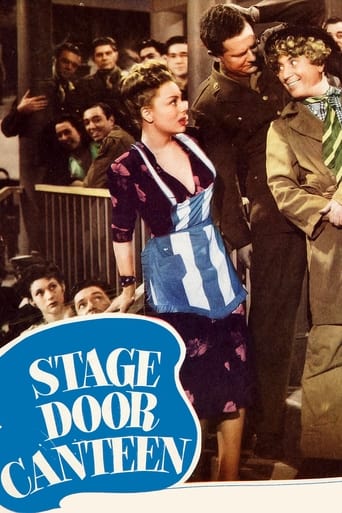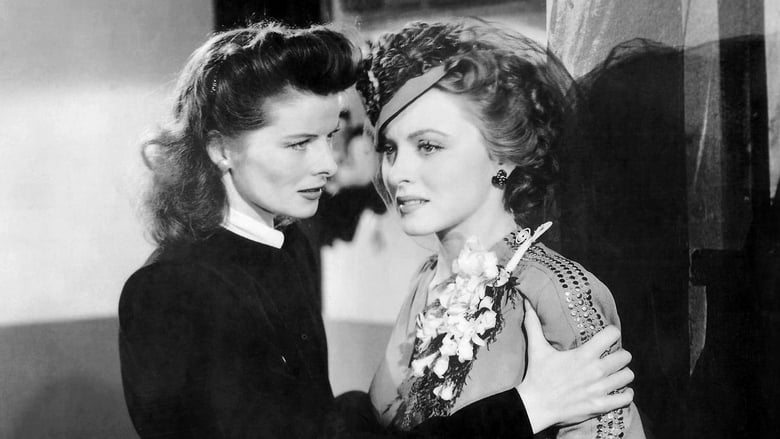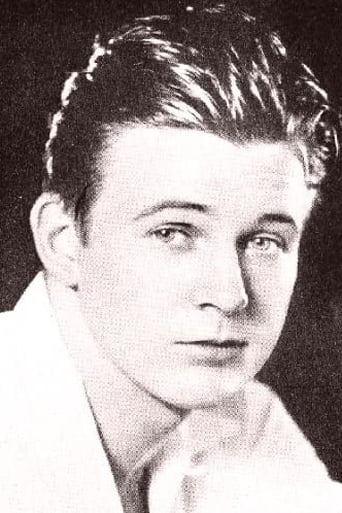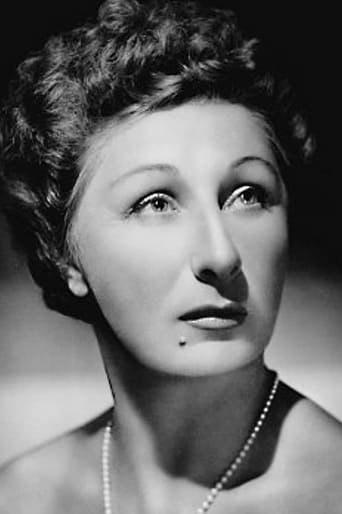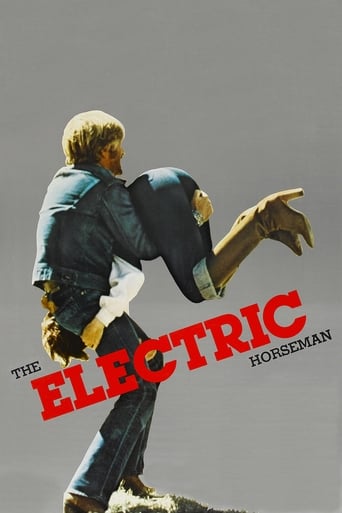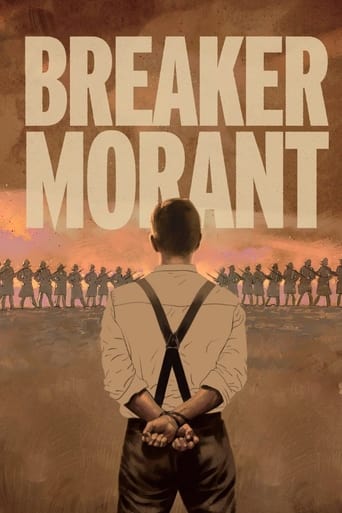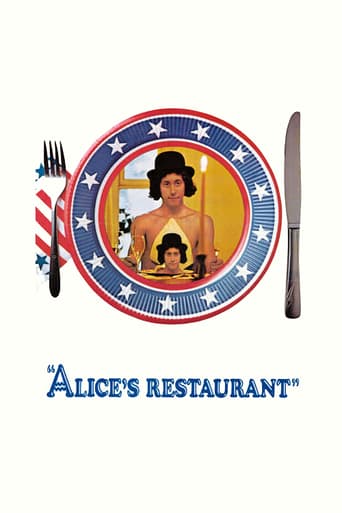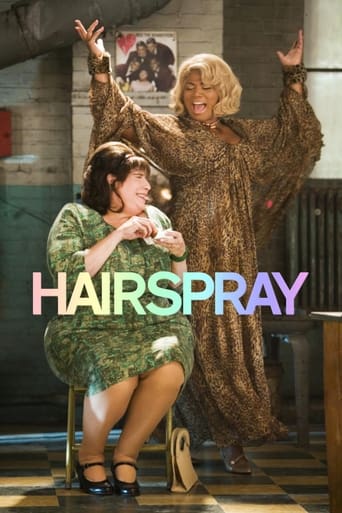Stage Door Canteen (1943)
A young soldier on a pass in New York City visits the famed Stage Door Canteen, where famous stars of the theater and films appear and host a recreational center for servicemen during the war. The soldier meets a pretty young hostess and they enjoy the many entertainers and a growing romance
Watch Trailer
Cast
Similar titles

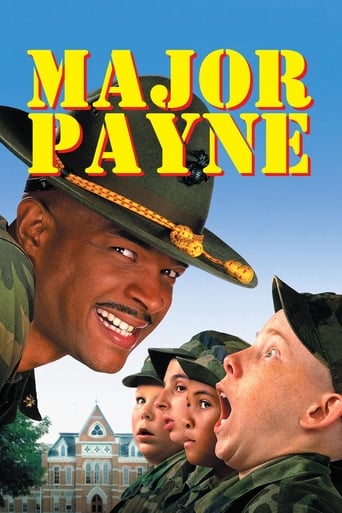
Reviews
Nice effects though.
Don't listen to the negative reviews
Beautiful, moving film.
I enjoyed watching this film and would recommend other to give it a try , (as I am) but this movie, although enjoyable to watch due to the better than average acting fails to add anything new to its storyline that is all too familiar to these types of movies.
The main story is mile high corn about being swept away by emotion during wartime but the cast roll is amazing as are some of the performances. In particular Peggy Lee, saucy and sexy, Ethel Waters who's full of snap and Kay Kyser's band who swing the place. There are some personalities who don't perform but swoop in an add a touch of spice then saunter back out, Tallulah Bankhead being the best example. Some of the stars are a bit stiff but that's natural considering most of them where stars of the stage not screen. This does provide a document for some, Helen Menken for one, of their only on screen appearance for others, The Lunts, etc. a very rare one. The film offers a window into the diversity of popular entertainment during the war years-from jitterbugging to classical music. Some stars appearances are mere bits, Dame May Witty and Aline MacMahon. While others show some of their famed act that could never make it past the censors otherwise, Gypsy Rose Lee's performance is the best example of this. Then there are a few performers who became better known to the general public when they were older, Helen Hayes among them, who it is fascinating to see in their younger years. Mixed in with all the marvelous array of talent and entertainment are heavy doses of patriotic speeches which of course was the whole point of the film. Some are low-key and some like Merle Oberon's call to arms more heavy handed. The picture holds its big gun at least as far as star wattage goes, Kate Hepburn, until almost the conclusion of the film. She delivers a flag waving speech which even though it's a tad awkward she saves by the look she delivers at the end of it. At times a trifle graceless and ham-fisted this is still a very enjoyable movie with an utterly charming scene between Katharine Cornell and Lon McCallister where they perform an impromptu scene from Romeo and Juliet, the best of many highlights.
Stage Door Canteen (1943)This is not a great movie as movies go, but if you stick it out, you'll find an amazing parade of great music from the time, played by the real deals, from Benny Goodman to Count Basie. There are some small moments that are treasures, and they will vary depending on who you are. I know I absolutely get choked up in the short recital of Romeo and Juliet with the great Broadway star Katharine Cornell playing Juliet--behind the lunch counter. And there is Katherine Hepburn (at the end), and Yehudi Menuhin (violin and Schubert) and Ray Bolger (he was the Scarecrow four years earlier). There is a really touching moment with a group of Soviet soldiers including a young woman, whose eyes and story are just super sad...but she says, if she meets a Nazi, her "hand will not tremble."The soldiers are such regular guys, all sweetness and loneliness. It's a sad reminder of the war at its most basic--tearing young men from their innocence--and yet of course this is putting the best tilt to it all. These kinds of "canteens" were benefits of sorts, morale boosters, and this movie is a summation of that best of them. Frank Borzage (the director) was top flight a decade early (he did the famous 1932 "Farewell to Arms"), and the photography by Harry Wild (a studio mainstay) is great.Still, it's a canned affair. After an hour of entertainment there's an interlude out on the streets which is weak, and then they are back for more. There are two parallel stories outside the music--the soldiers who are about to go to war, and they are floating around fishing for company, and the women, back stage and in off hours. It's not bad stuff at all.
This film and "Hollywood Canteen" are interesting little curios from WWII. During the war, actors on Broadway and Hollywood set up clubs for vets awaiting shipment overseas. In the clubs, the soldiers and sailors would be entertained by top acts and the wait staff were all actors. This film concerns the Broadway location and as such features many actors who are mostly famous for stage acting (such as Lunt and Fontaine) though there are quite a few familiar faces of actors who appeared on both coasts. Both films feature plots with fictional characters who all work or attend the Stage Door Canteen--and the actual actors who worked there are in the film as well. In light of this, the film might just have the largest list of acting credits I've ever seen! As for the plot, it's okay but is really just an excuse to feature a bazillion cameos. People like me who recognize many of the faces will no doubt enjoy the film (even if I'm not nearly old enough to have seen this film when it debuted). However, I assume younger folks who are not fans of classic films probably won't be very impressed when they see the likes of George Jessel, Judith Anderson, Ethel Waters and the like--as they'll have no idea who these folks were.I have a few observations of things you might want to look for if you see the film: Franklin Pangborn had an interesting scene with Johnny Weissmuller. Johnny takes off his shirt and Pangborn (who in the early 30s played several gay characters) stares at him admiringly.There were lots of sexual innuendos in this film. While they were all pretty mild, there's no mistaking several of them. I think the reason they were included is that this film was often sent abroad to show the troops--hence the presence of Gypsy Rose Lee! While Count Basie and Ethel Waters appeared to perform, there were very few Blacks in the film apart from them. I wonder if they weren't allowed in the Canteen and perhaps had to go to a "Colored Only" club instead. I assume this is the case, as the military was still not integrated and this would not occur until shortly before the Korean War. Also, in a Jitterbugging scene, the distant shot shows several Black men dancing--but the closeup is only White soldiers! There were lots of allied servicemen in the film (such as Australian, Chinese, Russian and Brits). I wonder if this really happened and assume foreign servicemen at the club was actually very, very rare--after all, what would they be doing in the US? Except in a few very rare cases, you think that they'd be in their own countries or at least somewhere in Europe or the Pacific.I would love to see this film on DVD where you could turn on and off credits that appeared DURING the film to tell you who all the famous folks were. My wife got pretty annoyed with me when I pointed them all out--and, oddly, whenever she seemed to ask who someone was, I didn't know! Ha! Overall, I really enjoyed this film. The plot, for what it was, was pretty entertaining but what I really liked were the many, many cameos and performances. A nice little window into yesterday.
You'll never see films like Stage Door Canteen again. The all star support the troops film is a thing of the past. Try to make something like that today and see how many stars would be willing. This is an art form deader than the dinosaur.No reason it can't be enjoyed though. Skip the slight plot involving the servicemen who are patronizing the Stage Door Canteen who hook up with the hostesses there. Concentrate on the number of stars in the film, each doing some bit of business for themselves.Though a number of film stars are here, the film concentrates on stars of the Broadway stage. Katherine Cornell makes her one and only appearance in a film, in fact my favorite part of Stage Door Canteen is her impromptu reading from Romeo and Juliet with bashful GI Lon McCallister who played Romeo in high school. Alfred Lunt and Lynne Fontanne are here also. The Lunts later did some televised plays and we have some kinescope version of them. They eschewed the screen though, so even a bit of footage of them doing kitchen police at the Canteen we should be grateful for.The concert violinist Yehuda Menuhin is also here and it's nice the GIs took time to hear some serious music, a break from the swing bands of the era that are featured like Count Basie, Freddy Martin, Benny Goodman, and Kay Kyser. Director Frank Borzage was known for doing films of tender romances and the nominal leads William Terry and Cheryl Walker were little heard from again. Still they do their best to provide the note of poignancy for the serviceman enjoying time with the stars before going to war.Funniest unintentional moment occurs when Franklin Pangborn and Johnny Weissmuller are on the serving line. Pangborn who was very close to being an out gay actor at the time is looking admiringly at Tarzan and engages in a little banter with Weissmuller. Tarzan decides things are too hot in the kitchen and removes his shirt. I thought Pangborn was going to faint on the spot.I'm a sucker for these all star extravaganzas, I'll never give a bad review to one of them. Stage Door Canteen provides a glimpse of a bygone era, not likely to return.
